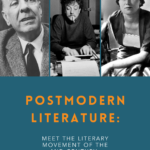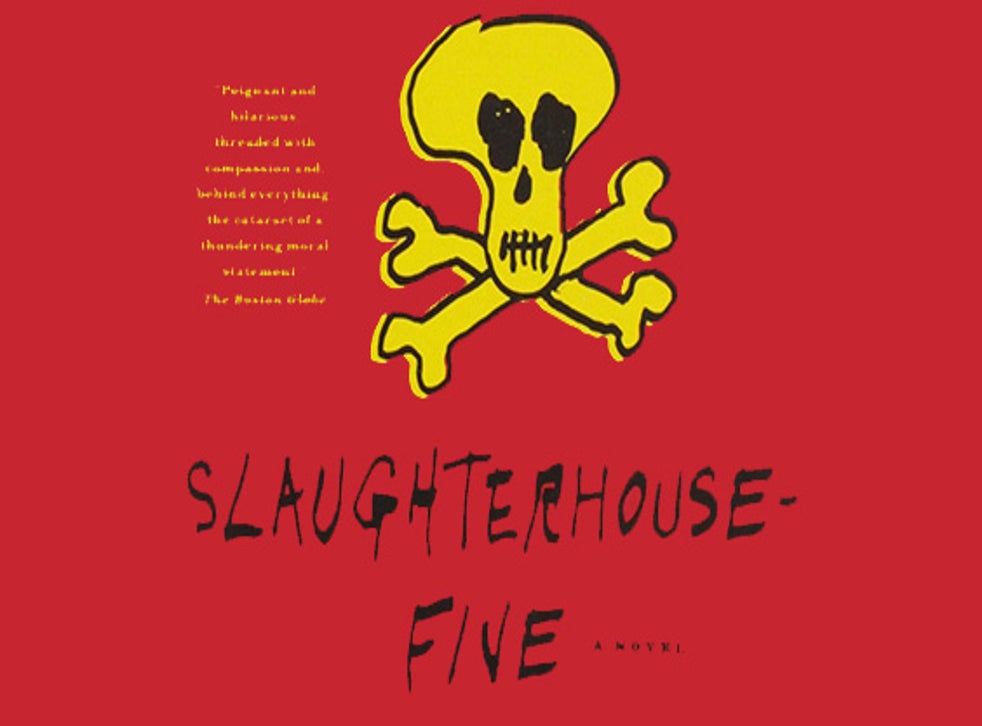
The design and architecture of the mid 20th century is well-known and celebrated worldwide. But what about the other artistic movements of the ’40s, ’50s and ’60s in literature or art? Join us as we tackle that first one: postmodern literature, the literary movement of the mid century.
Modernism Vs. Postmodernism
Though it may be an easy leap to assume that modern literature came about at the same time Mid Century Modern design did, that would be a misnomer! Modern literature found its place in the late 19th and early 20th century, as the world began reeling from rapid industrialization, World War I and the Great Depression. Modern literature focused on trying to find and create meaning in a chaotic world, but the literary movement that followed in the mid 20th century took a markedly different approach—postmodern literature looked at the unpredictable world surrounding it and simply decided that there was no meaning. “It has often been said that postmodernism is at once a continuation of and a break away from the modernist stance,” says Nasrullah Mambrol of “Literariness.”
However, this lack of meaning didn’t mean literature was doom and gloom from then on out. Rather, much of postmodern literature celebrated the meaninglessness of the world and embraced the obscure and the nonsensical. It blurred the lines between reality and fiction, and had fun doing it.
The Key Elements of Postmodern Literature
The notable literary devices of postmodern literature are paradox, unreliable narrators, unrealistic narratives, parody and dark humor. Most postmodern literature also rejects the idea of a single theme or meaning, choosing instead to have many meanings or forgo theme entirely. This rejection of theme and meaning is often because many of its authors and artists fail to see a singular meaning in the broken, disastrous world around them. Instead, it often enjoys poking fun at those who try to find meaning themselves.
Additionally, postmodern literature blurs the line between high and low art and genre, as literary works frequently use intertextuality (referencing other literature, real or imagined, within the work), metafiction (making readers aware of the fact that they are reading fiction) and magical realism (a realistic narrative with an implausible supernatural or magical element thrown in).
A Few Key Figures
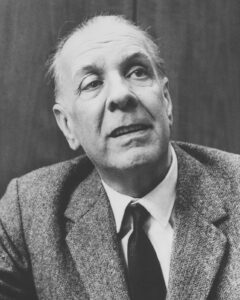
Jorge Luis Borges was one of postmodernism’s earliest writers. Writing almost exclusively in short stories, Borges’s work explored philosophical ideas and the boundaries of time and space, all without leaving the reader with any sense of a key theme or meaning. One of his most famous works is “Library of Babel,” a 1941 short story that describes a library full of everything that has been and will ever be written (the idea of ‘everything that could ever happen has happened’ is a very postmodern one) where visitors from all over come to try to find meaning. Unsurprisingly, they never do.
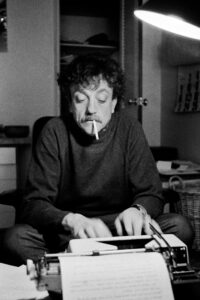
Kurt Vonnegut might be one of postmodern literature’s most recognizable authors—his works explored the counter-culture movement, state oppression and war. He frequently employed satire, irony and dark humor in his stories, and one of his most well-known ones is his 1969 book Slaughterhouse-Five, the obscure tale of aliens, time travel and World War II.
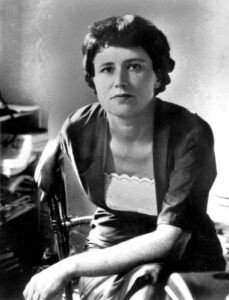
Doris Lessing, Nobel Prize winning author, brought an important female perspective to postmodern literature, as her 1950 book The Golden Notebook played with fragmentation and explored topics like mensuration and female sexual pleasure. Lessing’s works often walked the line between modernism and postmodernism and used scattered narratives and parody to tell a story.
Postmodern Poetry
Denise Levertov was a pioneer of what she dubbed “organic form.” Rather than adhering to traditional forms or eschewing them completely, Levertov held that a poem’s form will suggest itself naturally out of the poem’s subject. The poet’s job was to listen and unearth the poem’s innate form. She is known for being among the Vietnam War protest poets, but her work spans a variety of topics from ecology to spirituality and various human rights concerns.
Lucille Clifton, “discovered” by poet Langston Hughes, used spare, compact language in her poems, mostly devoid of even punctuation or capital letters. Her work explores themes of womanhood, motherhood, family, Black experience, and more, in incredibly distilled and powerful poems. Both Clifton and Levertov wrote across their lifetimes, but their debut work and pared down sensibilities were very much shaped by and in turn shaped the 1960s and 70s.
Jack Gilbert, also produced distilled and pared down poems. In an introduction to his work, Gilbert wrote of his own approach to poetry, “I am by nature drawn to exigence, compression, selection,” he wrote. “One of the special pleasures in poetry for me is accomplishing a lot with the least means possible.” His spare poems take a narrative shape. He first came to the public eye in 1962 for winning the Yale Poets Prize, landing on magazine covers, a rare thing for poets. Truly committed to economy in his work, he only published four books in his 50 years of writing.
Literary Journalism
The midcentury also saw the rise of a new genre, literary journalism with works such as Truman Capote’s In Cold Blood and Joan Didion’s collection of essays Slouching Towards Bethlehem. Rather than simply report on facts of a murder case, Capote’s chilling book reads more like a novel but is based on a true story. Didion’s essays toggle back and forth between facts–a strange murder case, life among the hippies in Haight-Asbury district, the historical background her native Sacramento, California–and narrative of her experience. This genre is characterized by excellent, descriptive, narrative writing as one would expect in literature, but with factual events and/or places as their concern.
For Your Shelf
If you love literature of the era or are more drawn to the graphic design of the era, here are some books from the mid century era that will enrich your mind as well as your shelves. We found some first editions to give a sample of the midcentury’s cover designs as well as the literature, but you can find more reasonably priced versions wherever you prefer to buy your books.








Learn more about some other great mid century reads by checking out Even If You Own No Other Books on Mid Century Modern Design, Own These. And of course, don’t forget to follow us on Instagram, Facebook and Pinterest for more Atomic Ranch articles and ideas!











